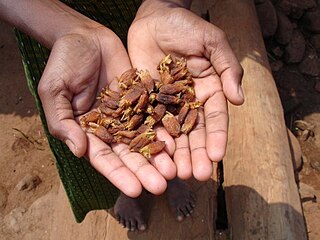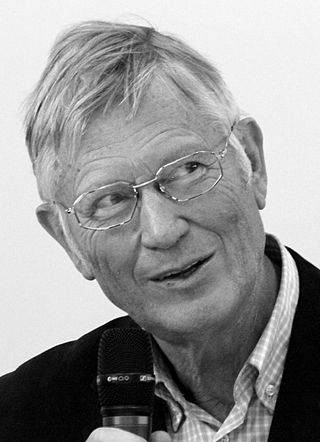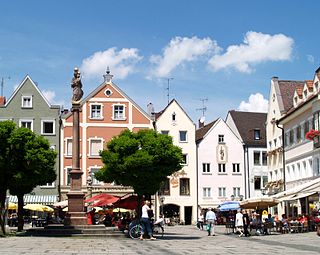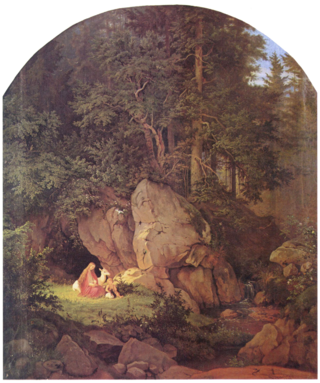
Holznot (German for wood crisis) is a historic term for an existing or imminent supply crisis of wood.

Holznot (German for wood crisis) is a historic term for an existing or imminent supply crisis of wood.

In particular, the concept was applied to Central Europe around the end of the 16th century until the start of the early 19th century in numerous sources. In almost all German-speaking regions, a wood shortage and resulting wood-saving measures became an important topic. [1] [2] Forestry and history scholars did not dispute the wood shortage per se for a long time. Besides the tragedy of the commons legend, the alleged Holznot was critical to motivate the shift from forest use as part of subsistence agriculture to modern professional forestry and was an important base of the development of modern forestry science around 1800. Around the 1980s, environmental historian Joachim Radkau began raising doubts about the alleged 18th-century wood shortage started a research controversy among German historians, called the "Holznotdebatte". Radkau debated e.g. with Rolf Peter Sieferle about the existence, extent, and spatial and social impact of perceived or real existing wood shortages and the associated ideological and economic background. [3] [4] Radkau doubted the Holznot had existed at all. Similar as with the tragedy of the commons he saw a strong ideological motive to get rid of the traditional farmers' forest access. [2]
Radkau repeats Werner Sombart's notion of the pre-industrial phase as a "Wooden Age", where wood constituted the key substance for fuel energy, construction and machinery. While Sombart was positive about the change to an "iron age", Radkau is critical about the alleged decline of "wooden civilisation". Before the industrial century, the "wood brake", as he names it, was a component of stability, of the ecology and the traditional economic and social order. In connection with the first medieval mining rushes in the Ore Mountains ("Berggeschrey") regional wood shortages gave rise to the first use of sustainability in German forestry.[ citation needed ]
However, the situation began to change in the 16th century, as meeting point of the capitalist expansion and the formation of the absolutist state. From the 16th century, world maritime trade, housing construction in Europe, and the mountain mining industry brought a sharp rise in timber consumption. The absolutist state asked for a new order of the use of forests and area property rights at the expense of livestock grazing and traditional forest use, as in resin extraction. Complaints about wood shortages served, according Radkau, to legitimate state intervention and to exclude traditional groups of users such as resin workers and wood pasture in favour of more profitable timber consumers. [2]
The term peak wood refers to the point in time when the maximum rate of wood harvesting is reached. The term 'peak' refers to the Hubbert peak of a resource. Thus peak wood and peak oil cannot be compared directly. [5] [6] [7] Unlike resources such as petroleum, which are destroyed in use, wood continually grows and recycled, but it requires habitat (forests, woodland and timber plantations).[ citation needed ]
Author Steve Hallett argues in the 2011 book Life Without Oil that deforestation during the Roman period may have ultimately caused the fall of the Roman Empire. As wood had to be hauled from ever further away, Hallett suggests the law of diminishing returns undermined the economic performance of Roman industry, leaving Rome vulnerable to other, well documented problems of invasion and internal division. Hallett presents the history as a cautionary tale, drawing comparisons to contemporary society's potential fate following a peak oil scenario. [8]

Forestry is the science and craft of creating, managing, planting, using, conserving and repairing forests and woodlands for associated resources for human and environmental benefits. Forestry is practiced in plantations and natural stands. The science of forestry has elements that belong to the biological, physical, social, political and managerial sciences. Forest management plays an essential role in the creation and modification of habitats and affects ecosystem services provisioning.

Rattan, also spelled ratan, is the name for roughly 600 species of Old World climbing palms belonging to subfamily Calamoideae. The greatest diversity of rattan palm species and genera are in the closed-canopy old-growth tropical forests of Southeast Asia, though they can also be found in other parts of tropical Asia and Africa. Most rattan palms are ecologically considered lianas due to their climbing habits, unlike other palm species. A few species also have tree-like or shrub-like habits.

A renewable resource is a natural resource which will replenish to replace the portion depleted by usage and consumption, either through natural reproduction or other recurring processes in a finite amount of time in a human time scale. When the recovery rate of resources is unlikely to ever exceed a human time scale, these are called perpetual resources. Renewable resources are a part of Earth's natural environment and the largest components of its ecosphere. A positive life-cycle assessment is a key indicator of a resource's sustainability.

Werner Sombart was a German economist, historian and sociologist. Head of the "Youngest Historical School," he was one of the leading Continental European social scientists during the first quarter of the 20th century. The term late capitalism is accredited to him. The concept of creative destruction associated with capitalism is also of his coinage. His magnum opus was Der moderne Kapitalismus. It was published in 3 volumes from 1902 through 1927. In Kapitalismus he described four stages in the development of capitalism from its earliest iteration as it evolved out of feudalism, which he called proto-capitalism to early, high and, finally, late capitalism —Spätkapitalismus— in the post World War I period.

Non-timber forest products (NTFPs) are useful foods, substances, materials and/or commodities obtained from forests other than timber. Harvest ranges from wild collection to farming. They typically include game animals, fur-bearers, nuts, seeds, berries, mushrooms, oils, sap, foliage, pollarding, medicinal plants, peat, mast, fuelwood, fish, insects, spices, and forage. Overlapping concepts include non-wood forest products (NWFPs), wild forest products, minor forest produce, special, minor, alternative and secondary forest products – for further distinctions see the definition section below
The following outline is provided as an overview of and guide to forestry:

Ludwig Greiner (1796–1882) was an influential 19th-century forest and lumber industry management expert who improved the effectiveness of woodland valuation methods in the Austrian Empire and trained a whole new generation of foresters in a comprehensive approach to the management of natural resources. While his goals were defined by a need to run a profitable business, he introduced procedures that replaced previous exploitative, earth-eroding lumbering on Saxe-Coburg's estates with practices that contained aspects of modern ecology. Greiner's insistence on a thorough woodland inventory of his employer's vast, poorly charted lands gave him his enduring recognition outside the field defined by his expertise. His passion for precision, geomatics, and the outdoors made him the first person ever to disprove the results of previous measurements and accurately identify Gerlachovský štít as the highest peak in the whole 1,500 km (900 mi.) long Carpathian mountain range.

Werewolf witch trials were witch trials combined with werewolf trials. Belief in werewolves developed parallel to the belief in European witches, in the course of the Late Middle Ages and the Early Modern period. Like the witchcraft trials as a whole, the trial of supposed werewolves emerged in what is now Switzerland during the Valais witch trials in the early 15th century and spread throughout Europe in the 16th, peaking in the 17th and subsiding by the 18th century. The persecution of werewolves and the associated folklore is an integral part of the "witch-hunt" phenomenon, albeit a marginal one, accusations of lycanthropy involved in only a small fraction of witchcraft trials.

Pomerania during the Early Middle Ages covers the History of Pomerania from the 7th to the 11th centuries.

Joachim Radkau is a German historian.

The Kunstgewerbemuseum, or Museum of Decorative Arts, is an internationally important museum of the decorative arts in Berlin, Germany, part of the Staatliche Museen zu Berlin. The collection is split between the Kunstgewerbemuseum building at the Kulturforum (52°30′35″N13°22′03″E) and Köpenick Palace (52°26′38″N13°34′22″E).

Weilheim in Oberbayern is a town in Germany, the capital of the district Weilheim-Schongau in the south of Bavaria. Weilheim has an old city-wall, historic houses and a museum.

Gero von Boehm is a German director, journalist and television presenter.

Lauterecken-Grumbach station is the station of the town of Lauterecken in the German state of Rhineland-Palatinate. It is classified by Deutsche Bahn as a category 6 station and has two platform tracks. The station is located in the network area of the Verkehrsverbund Rhein-Neckar and it is in fare zone 793. Its address is Bahnhofstraße 1.

The history of the forest in Central Europe is characterised by thousands of years of exploitation by people. Thus a distinction needs to be made between the botanical natural history of the forest in pre- and proto-historical times—which falls mainly into the fields of natural history and Paleobotany—and the onset of the period of sedentary settlement which began at the latest in the Neolithic era in Central Europe - and thus the use of the forest by people, which is covered by the disciplines of history, archaeology, cultural studies and ecology.

The German Forest was a phrase used both as a metaphor as well as to describe in exaggerated terms an idyllic landscape in German poems, fairy tales and legends of the early 19th-century Romantic period. Historical and cultural discourses declared it as the symbol of Germanic-German art and culture, or as in the case of Heinrich Heine or Madame de Staël, as a counter-image of French urbanity. It was also used with reference to historical or legendary events in German forests, such as Tacitus' description of the Battle of the Teutoburg Forest or even the nature mysticism of the stylized Germanic national myth, the Nibelungenlied as the history of its multi-faceted reception shows.

Hauberg is a type of communal forest management that is typical of the Siegerland and adjacent parts of the Lahn-Dill Uplands and the Westerwald in central Germany. Its aim is to manage the forest in order to produce tanbark and charcoal for the regionally important iron ore industry as well as firewood. In addition to forestry uses, the area also has agricultural uses, such as the growing of rye and buckwheat, typical of shifting cultivation, in the year after the timber harvest, as well as subsequent communal grazing (commons).
The wood industry or timber industry is the industry concerned with forestry, logging, timber trade, and the production of primary forest products and wood products and secondary products like wood pulp for the pulp and paper industry. Some of the largest producers are also among the biggest owners of timberland. The wood industry has historically been and continues to be an important sector in many economies.

The Reich Ministry of Food and Agriculture was responsible for the agricultural policy of Germany during the Weimar Republic from 1919 to 1933 and during the Nazi dictatorship of the Third Reich from 1933 to 1945. It was headed by a Reichsminister under whom a state secretary served. On 1 January 1935, the ministry merged with the Prussian Ministry of Agriculture, Domains and Forests, founded in 1879. Until 1938 and the Anschluss with Austria, it was called the "Reich and Prussian Ministry of Food and Agriculture". After the end of National Socialism in 1945 and of the Allied occupation of Germany, the Federal Ministry of Food and Agriculture was established in 1949 as a successor in the Federal Republic of Germany.
Fred K. Prieberg was a German musicologist. He was a pioneer in the field of history of music and musicians under the Nazi regime.